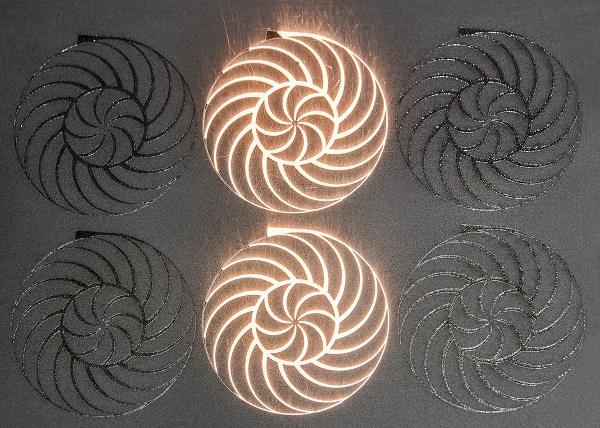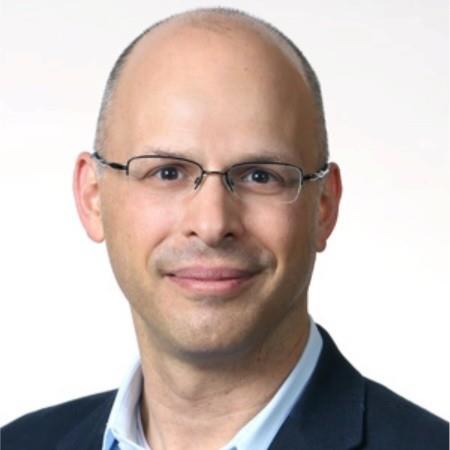
GE Additive and Wichita State University's National Institute for Aviation Research (NIAR) have teamed up in a new collaborative effort aimed at supporting the U.S. Department of Defence’s (DoD) accelerated adoption of metal additive manufacturing technology.
Additive manufacturing (AM) or 3D printing within the commercial and military aerospace and defence sector has grown significantly in the past ten years and both GE and NIAR have worked closely with the DoD, the FAA and other stakeholders to accelerate the safe adoption of metal additive manufacturing for critical applications.
John Tomblin, WSU NIAR executive director and senior vice president for Industry and Defence Programs and David Handler, GE Additive's General Manager for Government business sat down to talk about their non-binding Memorandum of Understanding as the cornerstone of a new collaborative effort and how it came about.

John Tomblin, NIAR

David Handler, GE Additive
John: The Department of Defence had a spare parts problem for some of its ageing aircraft and vehicles. They started to find that, when they needed parts, the original equipment manufacturer, the part supplier or the tooling to make the parts no longer existed. In addition, to make the parts they needed to use old drawings. At that point no company, whether using additive or traditional technology was interested in bidding for the work to manufacture them. We came up with a solution to make a digital twin of the entire aircraft which we have dubbed "metal to digital and digital to metal", and through this digital twin we can print perfect spare parts using additive manufacturing.
David: The DoD started asking who could solve their spare parts problem and both NIAR and ourselves came forward saying we could help. The conversation naturally emerged that we have the same customer asking both of us to solve the problem. We both have different and complimentary technologies and expertise and concluded that we should come together for the DoD. The time is now!
What does each partner bring to the project?
David: GE Additive is a world leader in additive technology, materials science, material manufacturing, component design, and aerospace qualification. NIAR is a world leader in aerospace applied research, material testing and qualification, digital twin, and structural testing and certification. It made complete sense for us to get a lot closer to NIAR, given that our capabilities are incredibly complimentary. For us it’s a true case of 1 + 1 equalling a lot more than 2. Our complimentary capabilities accelerated our commercial discussions to see what we could together bring to the DoD; it was as simple as that.
John: The National Institute for Aviation Research at Wichita State University has around 1300 staff that work in the Industry and Defense Programs Division. For 35 years we've conducted advanced applied research that gets parts into production with advanced manufacturing technologies, gets them through certification and gets them onto an aircraft. We've seen a lot of people try to do 3D printing of metals and simply, GE has cracked the code. They know how to do it; it works every time. We want to ensure this technology gets to the point where, if someone prints a part in any location, it is identical and with GE’s industry know-how, together we can do this.
The partnership will accelerate metal additive adoption within the military aerospace and defense industrial base by advocating for common practices, rapid qualification and certification, and it will develop a shared database for additive manufacturing data and knowledge, can you tell us more about this specific aspect of the project?
John: The materials database for the DoD will contain comprehensive, secure, accessible standard formats for materials data that all depots can use when they're printing parts and we are very excited to be collaborating with GE Additive on this. From the feedback we've received this is going to be tremendously useful to so many in the community and we're excited to take this forward as one of our initial collaboration projects. The platform is going to be flexible, one that can be used by all Services, and it's going to have a framework that has everything from pedigree of the feedstock through design data and the things that are associated with the data – like the specifications for the material and process all the way from raw materials to finished part – as well as, for example, the material allowable.
That is critical to include so they know how to use these data points in the actual design. Ensuring that the data currently being generated through programs like GE Additive Pacer Edge program with the Air Force is immediately available to the rest of the DoD through the database is also important and a huge benefit to users.
In terms of the ongoing vision, we want to create something that's flexible and we're going to be working with the Joint Services so that it evolves in the future to fit the requirements that they need, embedded into the system. Finally, we are going to have our students involved in the process to help them, and to help us create the next generation workforce that understands additive, understands what it takes to qualify additive processes.
What has the response been to this partnership among your contacts in military circles?
David: We love this… but go faster! This is going to enable additive manufacturing in different groups, whether in the Army, Navy or the Air Force, and our stakeholders believe that the availability of substantiated data will change everything. We’ve been told that this is genius because it goes across the DoD military platform. Our customers are invested, they like the partnership and they want it to happen as fast as it can.
When is everything going to be operationalised, what sort of timelines are we talking about for the first AM parts in vehicles?
John: The DoD wants to see results and that means parts on vehicles within 12-months. We've turned the hourglass over and we are both working to that timeline. We're going to go material after material after material and adapt them part after part after part. The more component development programs we have, the faster they get completed meaning that we can turn around more component programs. It’s a virtuous circle that feeds on itself.
If you were doing some blue-sky thinking, where would you see this partnership in five years’ time?
David: In my mind, five years from now I see GE Additive and NIAR working together in collaboration in a way that is naturally integrated within the DoD processes, because instead of them shopping a la carte we can provide them with the complete menu. I'd also emphasise what GE Additive is doing on the technology side. As John mentioned this is all about 'metal to digital and digital to metal' but within that paradigm how you print that metal can be very different. Right now, we have laser machines, electron beam melting (EBM) machines, Binder Jet is being developed, and ceramic printers are becoming a focus. So, there's a natural development to the relationship that will continue to evolve as we are successful in solving DoD's sustainment issues. The more GE Additive continues to invest in its platforms, whether it be in software, machines, powders or otherwise, the broader the scope of parts will be that are able to be brought into the partnership enabling DoD to print.
I think this vision continues to build on everything that GE Additive is investing in, what NIAR has invested in and allows for a broader scope of sustainment solutions to be brought for warfighter.
Source: GE Additive














